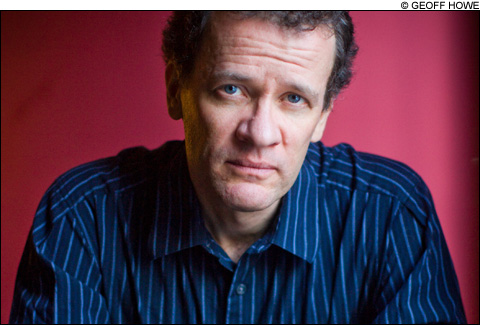
GAMES FOR GUSTAV? Dante, Beckett, the Holocaust — they’re all here. |
| Beatrice and Virgil | By Yann Martel | Spiegel & Grau | 224 pages | $24 |
In contemporary literature, the Holocaust is the okapi in the room: looming and somehow irresistible. Such, at least, appears to be the thesis of Beatrice and Virgil, Yann Martel’s first novel since his 2002 Booker Award winner, Life of Pi.The okapi, in the book, is stuffed, the namesake of Okapi Taxidermy, an odd little store in a foreign city in which the narrator, an author named Henry, has gone to live. The author, much like Martel himself, has had great success with a small novel that used animals to tell a story. The choice of animals, as Henry explains, “was for reasons of craft rather than of sentiment. Speaking before his tribe, naked, he was only a human and therefore possibly — likely — surely — a liar. But dressed in furs and feathers, he became a shaman and spoke a greater truth.”
As Beatrice and Virgil opens, we learn that Henry has spent five years on a new project, a paired novel and essay about the Holocaust. Together, they will present “a new choice of stories,” he tries to explain to his publisher. “In addition to the knowledge of history, we need the understanding of art.” But his idea of publishing the two as a flipbook is roundly rejected, and before long, he and his wife have moved from Canada to Europe — where, instead of writing, he is working in a chocolate shop, playing clarinet, and taking part in amateur theatricals.
All well and good, and to this point, Martel has done a beautiful job of describing the desolation of rejection. It is in Europe that things get metaphorical and a tad fey. We keep getting told there are letters from readers. But one day, there is also a large envelope containing a highlighted short story by Flaubert and a request for help. Before long, Henry is collaborating with the correspondent, a strangely unemotional taxidermist also named Henry, meeting him in a shop full of beautiful dead creatures to help him with a play about a donkey named Beatrice and a howler monkey named Virgil.
As this play develops, detailing Beatrice’s sore neck and Virgil’s sore back, their hunger, and their inability to do anything, author Henry himself makes the connection to both Dante and Beckett. And long before the animals directly refer to the unnamed central event, even he grasps that they are discussing the Holocaust.
Twice removed — in a sullen taxidermist’s creation of two wounded animals — Martel finally lets author Henry take on the retelling that his publishers rejected. And as we were warned, as in Life of Pi, the use of animals is key. Lacking an adequate vocabulary — an explanation more acceptable from animals than from humans — the two beasts make up a list as a way to talk about what they have witnessed. “To remember and yet to go on living,” as Beatrice puts it. “A howl, a black cat, words and occasional silence, a hand gesture . . . ” — the list is as random as life and death, both of which come into Henry’s life as he works on the play. Some of the listed items are explained, some not. And when Henry finally figures out the taxidermist’s role, the drama ends, sort of. Henry’s own story continues for a little, with the result that he creates one of those list objects — a series of questions or “games for Gustav.” These, for Henry, mark his return to fiction. They also, of course, serve as the flipside of the book. The essay after the fiction.